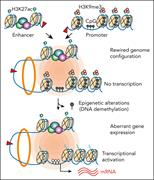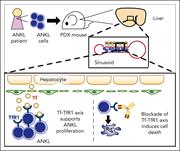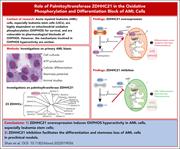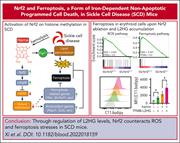Issue Archive
Table of Contents
BLOOD COMMENTARIES
The impact of TTP in the brain
Clinical Trials & Observations
REVIEW ARTICLE
Single-cell profiling in multiple myeloma: insights, problems, and promises
Single-cell profiling technologies can assess the genome, transcriptome, and epigenome of individual cells at high resolution. When combined, they allow recognition of cell identity, state, and activity. Samur and colleagues review how these technical and bioinformatic advances have shed light on how myeloma can become drug-resistant and the nature of the bidirectional relationship between clonal evolution and the changing tumor microenvironment.
CLINICAL TRIALS AND OBSERVATIONS
Silent cerebral infarction during immune TTP remission: prevalence, predictors, and impact on cognition
Clinical Trials & Observations
Immune thrombotic thrombocytopenic purpura (iTTP) can cause small vessel ischemic damage to any organ, including the brain. Chaturvedi and colleagues document silent cerebral infarction (SCI) in 50% of patients with iTTP in remission studied prospectively with MRIs and cognitive tests. SCI is strongly associated with major cognitive impairment, even in patients who had no overt neurological event during their acute episode.
LYMPHOID NEOPLASIA
Structural variation cooperates with permissive chromatin to control enhancer hijacking–mediated oncogenic transcription
Structural variants (SVs) are large sequence differences from normal genomes and occur commonly in leukemias and other cancers. Botten et al describe a new approach that combines genome sequencing, chromatin state, and transcriptional signatures to distinguish pathogenic SVs driving leukemogenesis from nonpathogenic passenger events. The authors identify methylation as a barrier to enhancer hijacking–mediated oncogenic transcription arising from SVs and demonstrate the applicability of their tools and model (Orca-Leukemia) in primary samples.
The hepatic niche leads to aggressive natural killer cell leukemia proliferation through the transferrin–transferrin receptor 1 axis
Aggressive natural killer cell leukemia (ANKL) is a rare hematological malignancy characterized by an aggressive clinical course and very poor prognosis. To study its pathophysiology, Kameda et al used patient-derived xenografts to mimic leukemic infiltration into hematopoietic organs, revealing the hepatic sinusoids to be a favored niche. The authors identified the transferrin–transferrin receptor 1 (TfR1) interaction as pivotal to this and demonstrate that an anti-TfR1 antibody has therapeutic potential in this model.
MYELOID NEOPLASIA
The palmitoyltransferase ZDHHC21 regulates oxidative phosphorylation to induce differentiation block and stemness in AML
Shao and colleagues reveal that a palmitoyltransferase, zinc finger DHHC-type containing 21 (ZDHHC21), regulates oxidative phosphorylation and is essential for a subset of acute myeloid leukemia (AML) cells in preclinical models. The authors’ work maps how palmitoylation of protein substrates by ZDHHC21 influences mitochondrial function and highlights ZDHHC21 as a potential druggable therapeutic target in AML.
RED CELLS, IRON, AND ERYTHROPOIESIS
Nrf2 sensitizes ferroptosis through l-2-hydroxyglutarate–mediated chromatin modifications in sickle cell disease
Sickle cell disease (SCD) is characterized by hemolysis, systemic hypoxia, and elevated oxidative stress. Xi and colleagues uncover how the transcription factor Nrf2, a master regulator of cellular oxidative response, alters l-2-hydroxyglutarate–mediated histone methylation and consequently reactive oxygen species production and ferroptosis in erythroblasts. Pharmacological activation of Nrf2 in murine SCD models protects against oxidative damage and ferroptosis, reducing hemolysis in vivo. These data suggest Nrf2 is a potential therapeutic target to ameliorate SCD symptoms.
BLOOD WORK
-
Cover Image
Cover Image
![issue cover]()
Palmitoyltransferase ZDHHC21 is critical for the OXPHOS hyperactivity in acute myeloid leukemia. AK2 (green) is palmitoylated by ZDHHC21 and colocalizes with the mitochondrion (red). Nuclei is stained with DAPI (blue). See the article by Shao et al on page 365.
- PDF Icon Front MatterFront Matter
- PDF Icon Table of ContentsTable of Contents
- PDF Icon Editorial BoardEditorial Board
Advertisement intended for health care professionals
Email alerts
Advertisement intended for health care professionals









The impact of TTP in the brain
Clinical Trials & Observations